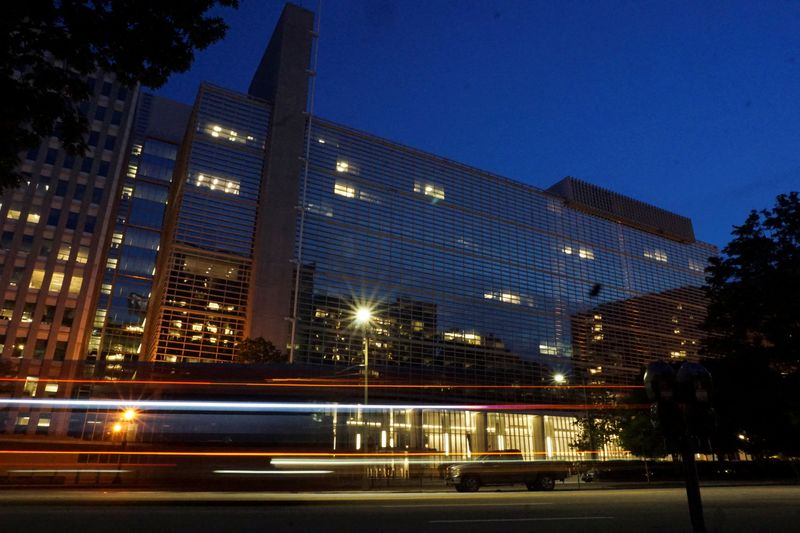By Andrea Shalal
WASHINGTON (Reuters) -The World Bank on Thursday warned that U.S. across-the-board tariffs of 10% could reduce already lackluster global economic growth of 2.7% in 2025 by 0.3 percentage point if America's trading partners retaliate with tariffs of their own.
U.S. President-elect Donald Trump, who takes office Monday, has proposed a 10% tariff on global imports, a 25% punitive duty on imports from Canada and Mexico until they clamp down on drugs and migrants crossing borders into the U.S., and a 60% tariff on Chinese goods. Some countries including Canada have already vowed to retaliate.
The World Bank said simulations using a global macroeconomic model showed a 10-percentage point increase in U.S. tariffs on all trading partners in 2025 would reduce global growth by 0.2 percentage point for the year, and proportional retaliation by other countries could worsen the hit to growth.
It said those estimates were consistent with outside studies which showed a 10-point increase in U.S. tariffs could "reduce the level of U.S. GDP by 0.4%, while retaliation from trading partners would increase the total negative impact to 0.9%."
But it noted that U.S. growth could also increase by 0.4 percentage point in 2026 if U.S. tax cuts were extended, it said, with only small global spillovers.
The Bank for International Settlements on Thursday also chimed in, warning of increased "frictions and fragmentation" in global trade and calling a broad-based trade war between Washington and other countries "a tangible risk scenario."
The World Bank's latest Global Economic Prospect report, issued twice yearly, forecast flat global economic growth of 2.7% in 2025 and 2026, the same as in 2024, and warned that developing economies now faced their weakest long-term growth outlook since 2000.
The multilateral development bank said foreign direct investment into developing economies was now about half the level seen in the early 2000s and global trade restrictions were five times higher than the 2010-2019 average.
It said growth in developing countries is expected to reach 4% in 2025 and 2026, well below pre-pandemic estimates due to high debt burdens, weak investment and sluggish productivity growth, along with rising costs of climate change.
Overall output in emerging markets and development economies was expected to remain more than 5% below its pre-pandemic trend by 2026, due to the pandemic and subsequent shocks, it said.
"The next 25 years will be a tougher slog for developing economies than the last 25," World Bank chief economist Indermit Gil said in a statement, urging countries to adopt domestic reforms to encourage investment and deepen trade relations.
Economic growth in developing countries dropped from nearly 6% in the 2000s to 5.1% in the 2010s and was averaging about 3.5% in the 2020s, the bank said.
It said the gap between rich and poor countries was also widening, with average per capita growth rates in developing countries, excluding China and India, averaging half a percentage point below those in wealth economies since 2014.
The somber outlook echoed comments made last week by the managing director of the International Monetary Fund, Kristalina Georgieva, ahead of the global lender's own new forecast, to be released on Friday.
"Over the next two years, developing economies could face serious headwinds," the World Bank report said.
"High global policy uncertainty could undercut investor confidence and constrain financing flows. Rising trade tensions could reduce global growth. Persistent inflation could delay expected cuts in interest rates."

The World Bank said it saw more downside risks for the global economy, citing a surge in trade-distorting measures implemented mainly by advanced economies and uncertainty about future policies that was dampening investment and growth.
Global trade in goods and services, which expanded by 2.7% in 2024, is expected to reach an average of about 3.1% in 2025-2026, but to remain below pre-pandemic averages.